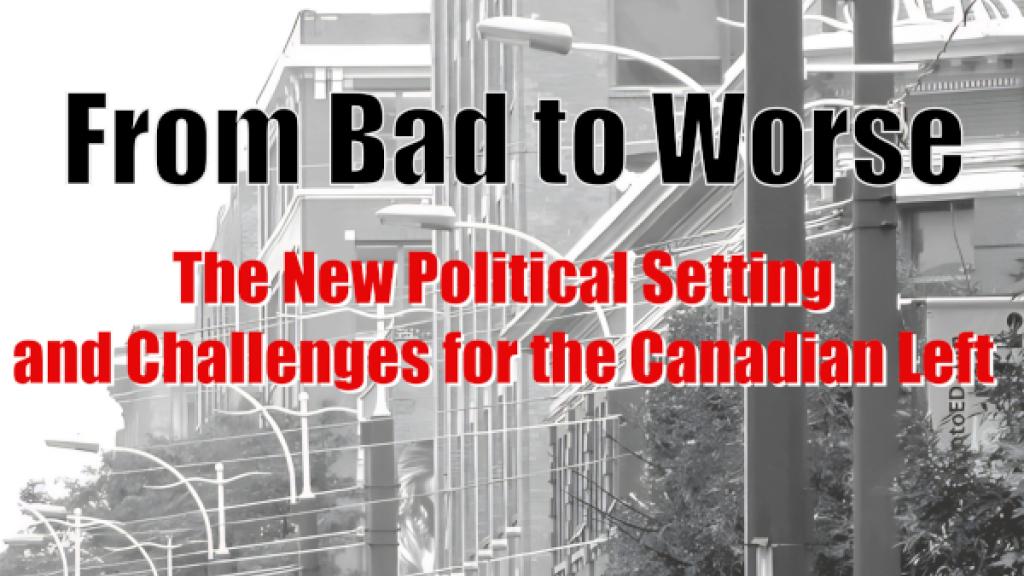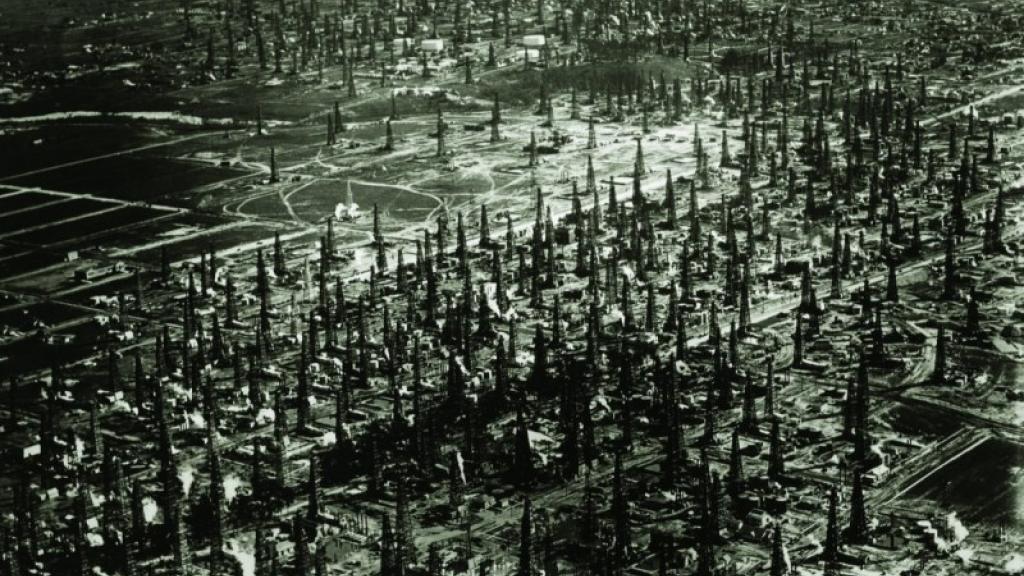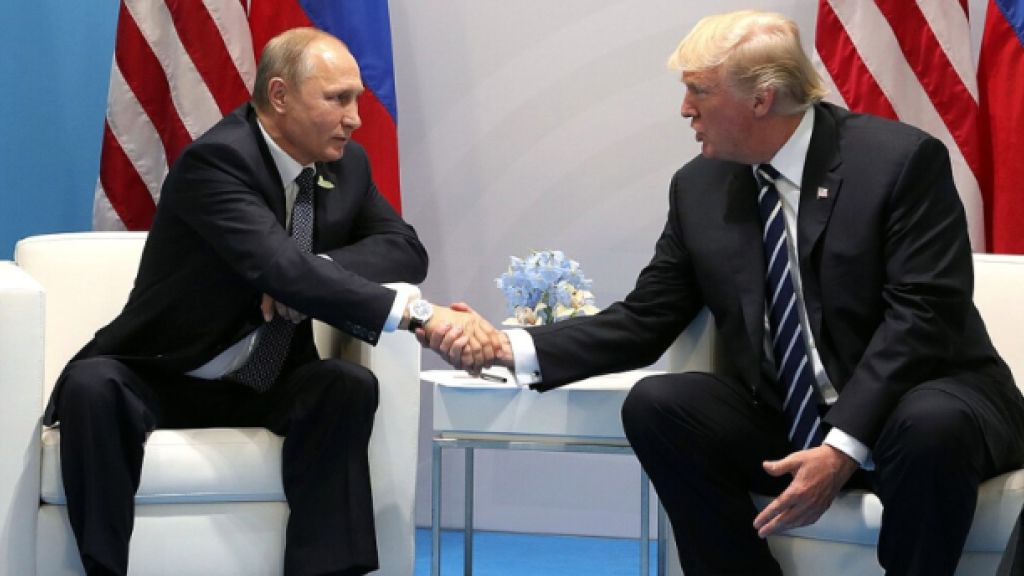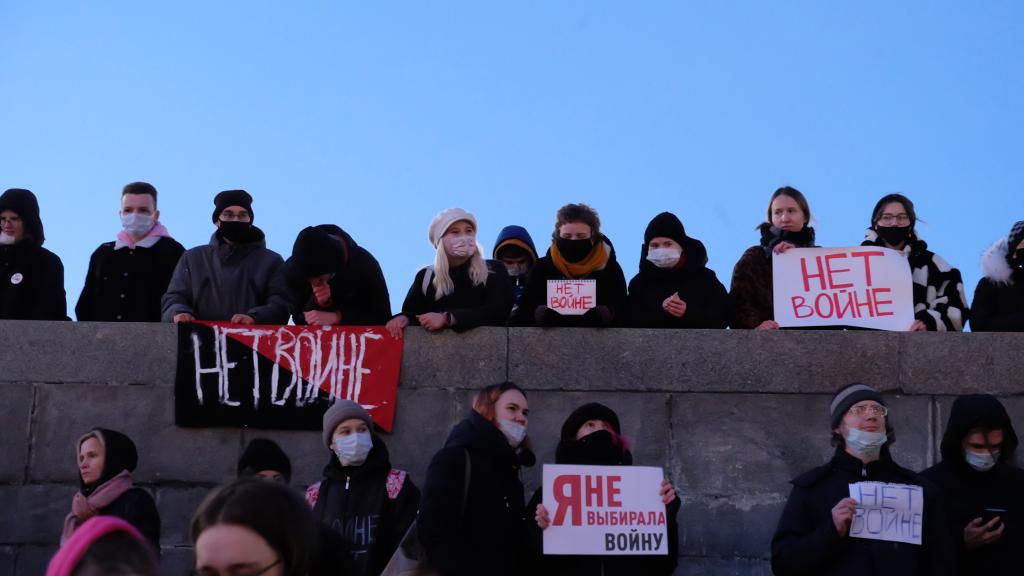From bad to worse: The new political setting and challenges for the Canadian left

First published at Socialist Project.
The current political conjuncture can be defined by an unfolding sense, in Canada and around the world, that neoliberal policies have failed and even capitalism itself is not working. This is driven by the weakening, dismantling, or even destruction of the things that had made the capitalist system seem ‘legitimate’ and ‘fair’ in the eyes of the working classes — rising wages, affordable housing, improving healthcare, and protecting the environment. This constitutes a growing legitimation crisis.
While the most immediate origin of this impasse is the 2008-10 ‘great financial crisis’, it is more deeply rooted in the structure of the neoliberal state, which is undergoing further deepening of its authoritarian features across most countries, especially with the coming into power of the second Donald Trump administration in the US in January 2025.
The transformation of capitalist states to a more disciplinary and market-centred policy regime emerged as states sacrificed higher taxes on the wealthy, which had supported social policies and programs, to the needs of capital for increased profits in the face of the long crisis of the 1970s. The state’s accumulation functions — the various policy supports for capitalist class profitability and economic success — became predominant over social provisioning to meet human needs for health, aging, education, culture, and so forth. To accomplish this agenda, from the 1980s, there was an extensive centralizing of state power within central banks, ministries of finance, and policing and prison agencies, all of which are substantially insulated from democratic pressures and accountability.
The role of political parties, elections, and other state institutions associated with making the system legitimate became increasingly limited and circumscribed, along with a sustained curtailment of trade union rights. Yet, in the context of rising labour market precarity and stagnating wages into the 1990s, working-class dissent was largely contained. This neoliberal state — one of privatization, de-regulation, free trade, and increased policing — led many activists and socialist writers to speak of a setback in working-class politics and a ‘hollowing out’ of liberal democracy.
The effects of the 2008 financial crisis
It was in 2008 that these developments erupted into a full-blown crisis of political legitimacy, often termed the ‘global financial crisis’. The financial crisis initially concentrated on those institutions within the state system most directly associated with ideological integration — convincing people that the capitalist system is legitimate and just — such as political parties, the mainstream media, and education institutions. It also took the form of a crisis of imperialism, ‘reverberating out’ from the American imperial centre throughout the imperial system, including Canada, as well as echoing back to the US imperial core itself. Canada being the ‘empire’s most dependable ally’, it faced many of the same contradictions as the US in managing the economic, social, and ideological effects.
The financial crisis thus revealed the interconnectedness of distinct social formations that took shape through the period of US-led globalization. Over several years, financial instability, recession and unemployment, and bailouts rippled through particular social formations in distinct rhythms defined by each national state’s location within the imperial system, their balance of class forces, and their class composition. Each state had its particular manifestations, simmering tensions, and morbid symptoms — the appearance of Trump and the MAGA movement in the US, the re-emergence of major fascist movements in Germany, Italy, France and other parts of Europe, and explosive racist riots in Britain. In Canada, there was the emergence of a populist far right in the national Conservative Party, political splits into far-right parties in several provinces, and the emergence of the People’s Party of Canada.
The crisis has been augmented by popular anxieties about impending ecological breakdown, with wildfires, flooding, and record storms all hitting across North America with frightening regularity. The patent failure of capitalist states to take meaningful steps toward addressing the mounting catastrophe has eviscerated the myth of liberal ‘progressivism’ and ‘policy incrementalism’ that things will gradually get better. The illusions that have long been critical for legitimating the capitalist system such as the notion of ‘a better future’, and even the idea of ‘the future’ itself on which such ideologies rely, has abruptly vanished, especially in the eyes of young people.
Meanwhile, the continuation of austerity and privatization have kept increasing the exposure of working-class lives to the market, rolling back what protections remained from its ravages while expanding or entrenching its centrality and power in allocating resources. A new generation that has come of age in Canada since the 2008 crisis is now confronting a political and economic order that appears utterly incapable of providing meaningful, secure lives, manifested in major challenges of housing, maintaining incomes, and job security.
This regime of ‘market authoritarianism’ has been consolidated through the hardening of centrist coalitions, leaving the electoral terrain overwhelmingly unfavourable for intervention by socialist or popular forces. In addition to highly coercive governance at home, these forces have turned to a growing militarism abroad, including increasing Great Power confrontation and the development of powerful new weapons systems such as hypersonic missiles armed with a new generation of nuclear bombs. The growth of this militarism is evident in the US/NATO-backed war in Ukraine, (now being reassessed by the Trump administration as of 2025) and the Israeli-US genocidal war on Gaza.
Donald Trump and the rise of the right
The new Trump Administration has launched an aggressive mix of authoritarian attacks on key state institutions and immigrant communities, using presidential decrees to bypass legislative oversight. This concentration of executive power is mixed with a new and aggressive imperialist discourse, with sometimes illogical threats against other states and territories, including Greenland, Panama, China, and Canada. It is unclear how long it will take for these changes to be institutionalized and how deep these changes will go in making a new authoritarianism. So far, there is little opposition being organized in the US. Elements of the capitalist class still committed to the US-led globalization project are uncomfortable with Trump’s moves (except the promise of tax cuts) but silent; the Democratic party is directionless after the defeat of the Biden agenda and the popular alienation resulting from their backing the wars in Ukraine and Gaza; and the US left and the labour movement is still organizationally sputtering, noticeably silent on threats to workers in Canada and Mexico.
The hardening of politics and the state has been initially successful in North America in warding off the growing global threat of the far-right, movements propelled especially by increasingly radicalized smaller business owners (petty-bourgeoisie) long squeezed by globalization, alongside sections of the working class that are angry and politically confused. Despite their significant contradictions and major programmatic and strategic limits of the populist and hard right, such social forces have been the primary beneficiaries of the legitimation crisis. They have proven to be able to fill, to greater or lesser degrees, the ideological spaces evacuated by social democratic and liberal political forces in Europe and North America.
The ongoing neoliberal realignment of beleaguered social democratic parties, for example, has continued to both reflect and drive working-class decomposition, underpinned by the centrifugal economic forces of dispersal and precarity, forced increases in individual responsibility in job markets, and intensification within labor processes. This process has persisted following the political defeats of Bernie Sanders (bridging the Democratic Party and the Democratic Socialists of America) in the US, Jeremy Corbyn in the British Labour Party (as with Tony Benn earlier), and the impasses of the new parties of left realignment in Greece, Spain, Germany, and elsewhere in Europe. The defeats have paved the way for corporate-backed liberal centrists to assert a renewed stranglehold on centre-left parties, with little in the way of electoral success to show for it. The NDP has followed a not dissimilar approach at both the provincial and federal levels in Canada.
The youth in Canada, US, and Europe have not been immune from embracing market and right-wing economic solutions due to their lack of confidence in their economic and social futures, manifested in growing electoral support for conservative parties, such as Pierre Poilievre’s Conservative Party of Canada and Trump’s Republican Party. Yet protest, as in previous eras — such as during the times of the anti-globalization movement, Idle No More, and Black Lives Matter uprisings — has drawn in new waves of young people. This time, it is the growth of the encampments and protests over Israel’s genocidal attacks in Gaza that has drawn new waves of young people into the world of anti-imperialist thinking, BDS actions, and progressive politics. Union organizing in the logistics sector and around Amazon, as well as other campaigns around the gig economy, have also sparked a new cohort of labour activists.
Social democratic parties such as the NDP have long given up on the possibility of challenging capitalism and have advanced little more than modest reforms of the neoliberal regime in their endless search for a ‘capitalism with a human face’. It is crystal clear that entering these parties has not formed an anti-capitalist politics or allowed a vehicle for building a new left politics to emerge. The current context of a weak radical left, fragmented working classes, and a politically cautious trade union movement has led many on the left, in both Europe and North America, to see little alternative but to join forces with mainstream political parties as ‘junior partners’ in new ‘popular fronts’ as the only path to combat the immediate threat of the growing hard-right. This takes the form in Canada of varied electoral alliances of the NDP, the Greens, and Liberals (with a variant specific to Quebec), supported by a wide matrix of organizations of the social left seeking to block further erosion of social gains.
The growing threat of the right must be addressed. But this must not come at the expense of dissolving socialist politics into coalitions whose political and economic strategies — of neoliberalism and global war-making in Eastern Europe, the Middle East, and across Asia — have been so directly responsible for the growth of hard-right forces in the first place. Indeed, in this conjuncture, it is more important than ever that the socialist left do everything possible to increase its visibility, create an organizational presence, and advance, as strongly as possible, an alternative political vision. This is not only necessary to preserve the democratic gains of the past but also to address the mounting demands of the ‘terrifying’ near future that Trump, NATO, and climate change are unrelentingly pushing us towards. If the market-based ‘solutions’ to the ecological crisis offered by the neoliberal center are inadequate, we must explicitly insist that only a fundamental challenge to capital, and a deep reorganization of the economy through a radical democracy and the implementation of a democratic planning regime, has any chance of leading to a sustainable future. That we are running out of time does not mean that centrist compromises or ultra-left posturing suddenly become more effective.
The opening for socialists
In the current moment, with the threat of Trump’s tariffs and their socioeconomic fallout there is a political opening for socialists. The need to re-calibrate Canada’s relationship to the US empire — for some, even to disengage from it — is becoming a popular topic amongst working people of all backgrounds. They express concerns about the level of integration with the US and the costs of Trump’s social and economic policies, including the demands for a radical increase in military spending and the militarization of the Arctic and the Canada-US border. Challenging Trump means different things to different sections of the capitalist class in Canada, with a majority wanting the status-quo ante, others calling for further integration, and a small minority seeking a more national-centred industrial policy, based on increasing competitiveness and capitalism, but in many ways still accommodating to the US empire and tied to export dependency. The latter includes proposals to build east-west fossil fuel pipelines, lower inter-provincial trade barriers, aggressively seek new export markets, pursue more neoliberal governance and economic policies, and accommodate demands for more spending on the military, with further military operational integration with the US and NATO in the Arctic, Europe, and East Asia.
Socialists have an opportunity to argue for disengaging with the US empire through building towards a different cooperative, socially owned, and democratically planned economy organized to meet human needs. Such an economy would be more oriented towards internal development, with social provisioning for housing, education, public transit, and healthcare for working people, and a determined move towards ecological sustainability and radically reduced carbon emissions. This would require a break with capital mobility, controls on finance and credit, a new tax regime and a halt to austerity, a move away from a reliance on fossil fuels, and a break from the more authoritarian neoliberal path that Trump is setting the US out on and that Poilievre, Doug Ford, and the Conservatives intend to tail.
The socialist left we need to build must be anti-imperialist. This does not mean sowing illusions that capitalism is ‘on its last legs’ or that the US empire is on the verge of disappearing as the dominant world power. We must soberly acknowledge the scale of the challenge. If the American empire has become more fragmented, and the American state is no longer enjoying a ‘unipolar moment’, and its primacy in the world order has eroded, it nevertheless remains the dominant global economic, military, and diplomatic power. Similarly, capitalist globalization and the mobility of capital is still very much in place, the corporations are still raking in profits, and environmental and social dislocations are not causing a rethink of the resort to price and market solutions in an attempt to resolve them. Capitalism will not collapse on its own; it must be transformed through working-class political action. This must include confronting colonialism, which is often closely linked with extractive fossil capitalism. This begins with declaring our solidarity with Indigenous Land Defenders, as a priority commitment to the right of colonized peoples to live with dignity and self-determination.
There is today a polarization of options. The politics of class compromise that defined the social democratic politics of the 20th century, coming out of world wars and the emergence of mass unionization, is no longer on the table. Even winning moderate reforms today requires direct confrontation with capital and capitalism which, in turn, requires building the deep social base necessary for this to become effective. Such efforts must go beyond the electoralism that sees voting for individual politicians as a shortcut. And it does not amount to rebuilding and enlarging conservative trade unions whose limited political horizons were so directly implicated in bringing us to where we now are. The left’s political efforts to build on the edges of the union movement can only occur in ways that leave us dependent and having to refrain from challenging the union’s political direction.
Isolated mobilizations and resistance — such as successful strikes in the auto sector and others — have been important. But they have been unable to provide a sustained breakthrough beyond the larger inertia of cynicism and fatalism on the part of the working class. The labour movement in Canada still needs to be transformed.
The socialist project moving forward
All this requires a socialist party, which can engage in working-class formation through political praxis, linking disparate struggles together and transforming unions into organs of class struggle. This is the setting the Left faces, in both Canada and beyond.
From this political statement, the Socialist Project is looking, not just at the past and present, but, like all socialists — at the future. Clearly, the present is not one of great success for the working class and socialists: the ravages of neoliberal capitalism, the vicious imperialism of Trump, the defeat and weakness of working-class movements, especially the organized labour movement, and the rise of right-wing populism and social conservatism, in the face of the inability of liberal centrism and social democracy to confront capitalism. This is not to mention the horrendous loss of life in wars such as in Gaza, Ukraine, and elsewhere or the travesty of life without clean water, in the midst of plenty, in indigenous communities.
Still, there are possibilities and hope: the working class, although defeated politically, continues to fight back, albeit in forms that lack consistency, organizational power and cohesion, and a working-class-oriented political culture and ideology. But much of the turn towards cynicism and right-wing thinking and voting reflects the reinforcement of the worst components of capitalism — unemployment, inequality, climate degradation, social breakdown, and backlash — that inevitably come with political and social leadership that daily accepts and reinforces that the myth that there can be no alternative to capitalism. Workers respond to those who offer false solutions, such as the Trumps and Poilievres of this world.
But the insecurity, anger, and frustration that drive many workers to the right can serve as the bases of an alternative to the left. Socialists have a central place in efforts to build a class understanding and identification within and across the working class, in Canada and in other countries. We have an exciting responsibility and potential to work in key working-class institutions, communities, and unions to develop a new generation of leaders from the working class to build an alternative. They can find strong motivation from the huge protests over the Gaza genocide; the deepening anger, and resentment of working people looking for housing, health care, decent jobs, and affordable food and recreation; and the growing awareness of the need to create a Canada — in solidarity with others — where working people are capable of making key economic and political decisions, in the face of the US empire’s bullying, and the business class’s compromises and driving need to make profits on the backs of working people.
This requires the building of a socialist political party, based on the actions, ideas, and organization of the working class. The working class is large and is the source of the work that drives all aspects of social and economic life, yet we are divided by sector, labour market levels, status and identity: blue collar/white collar, immigrants and native born, migrants, precarious workers, men/women, transgendered, LGBT, public/private, homeowners/renters and the homeless. Bringing together these segments and building a political movement and common identity are the task of this kind of party. Summarizing lessons from experience and struggles is a key role for socialists, and an exciting prospect for building and challenging the existing social system.












